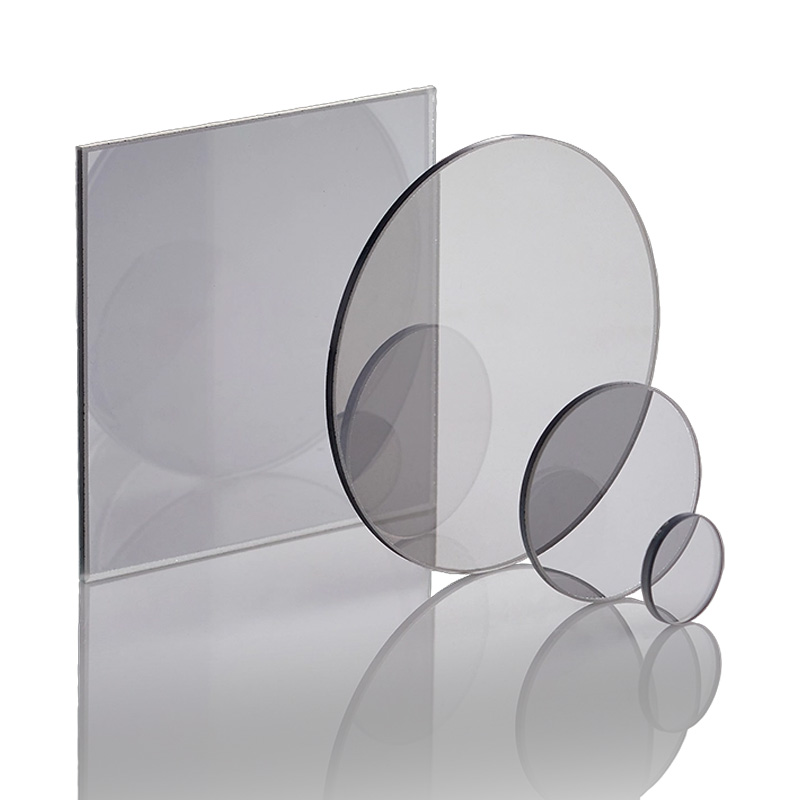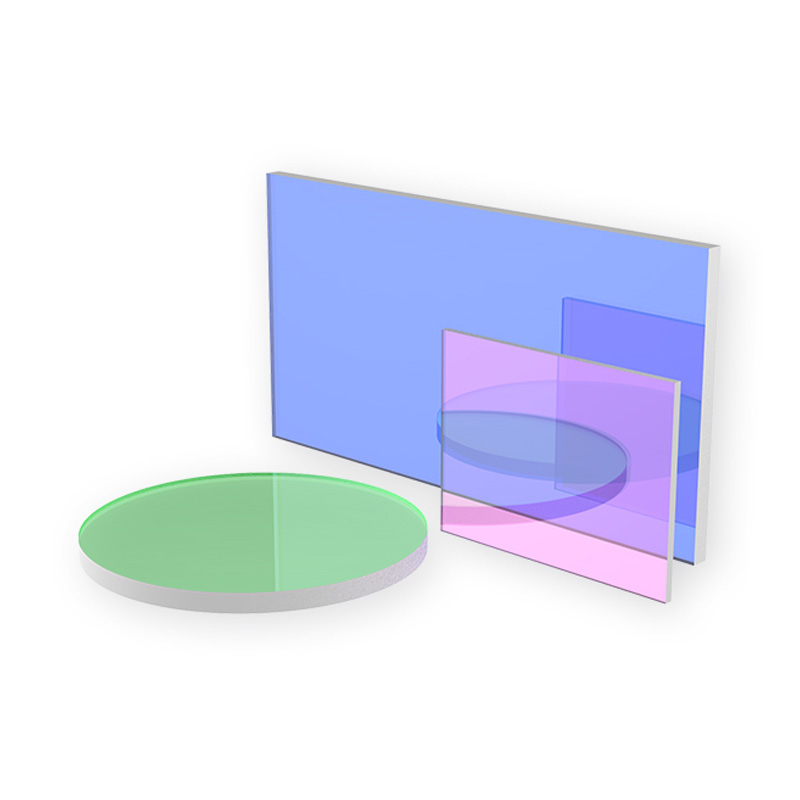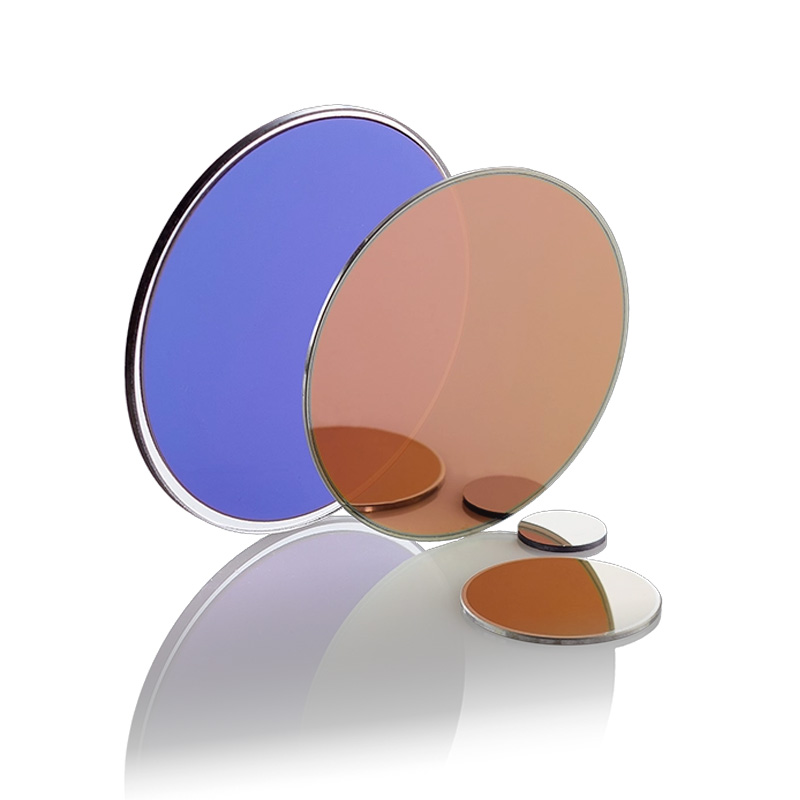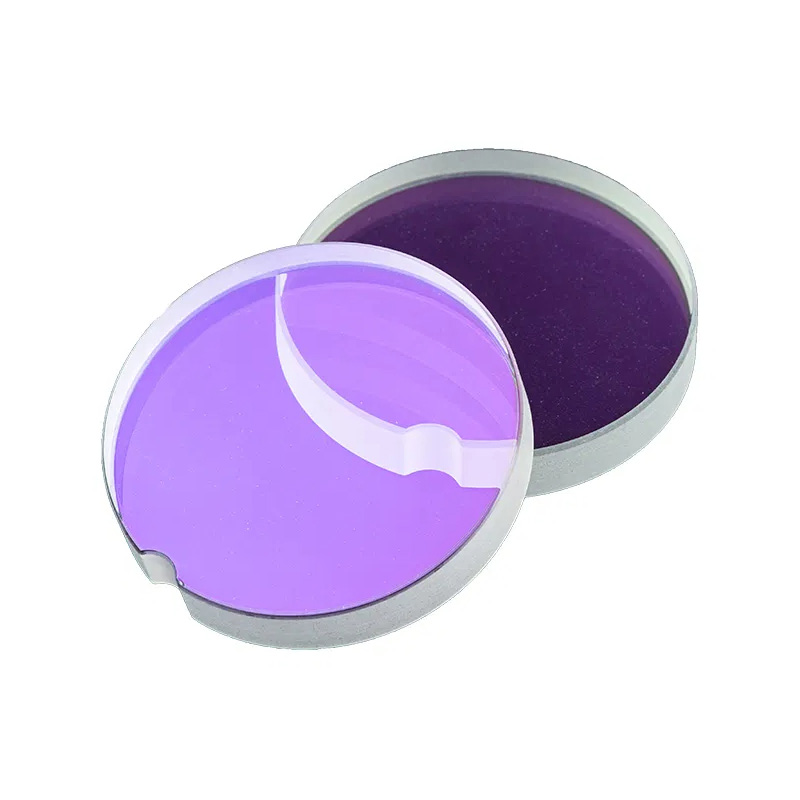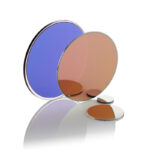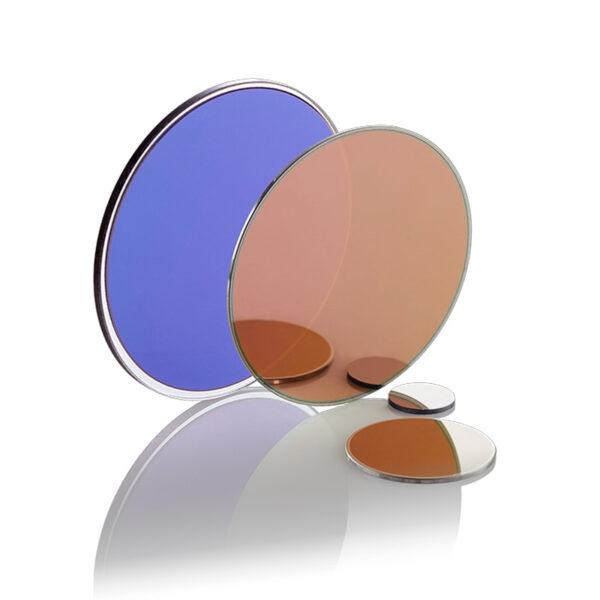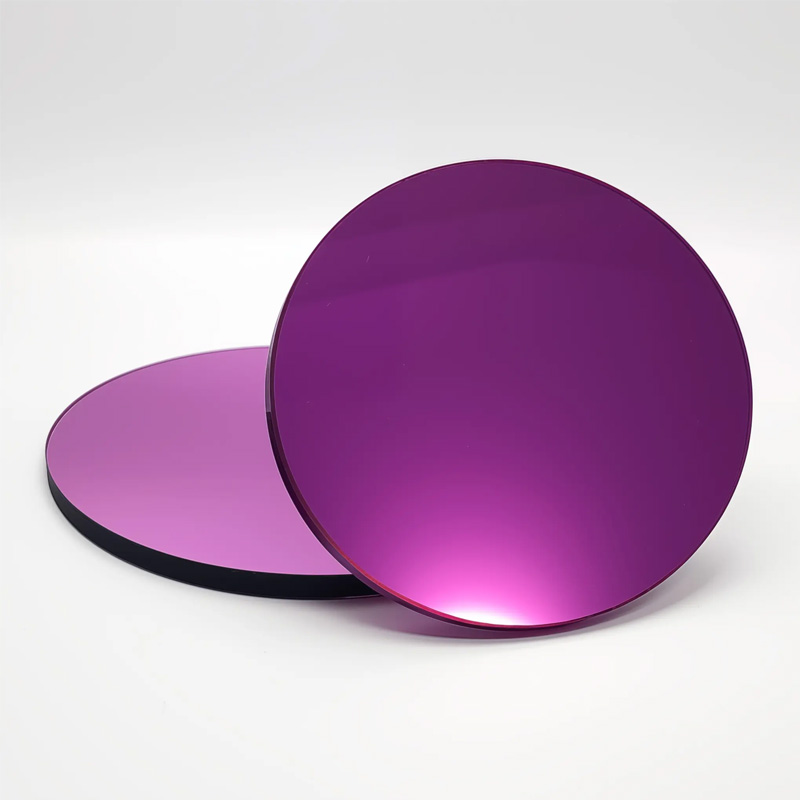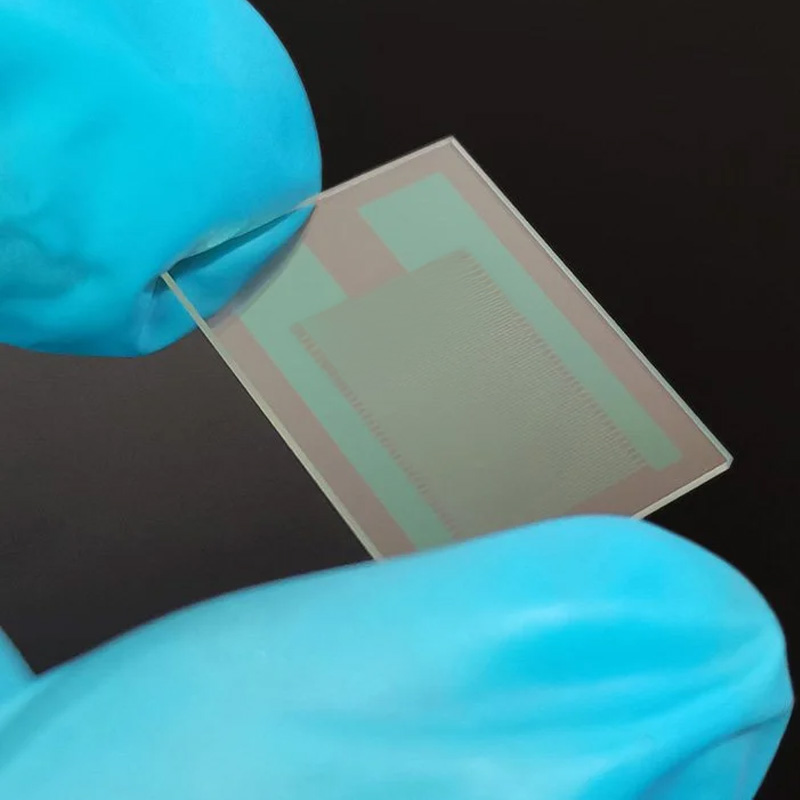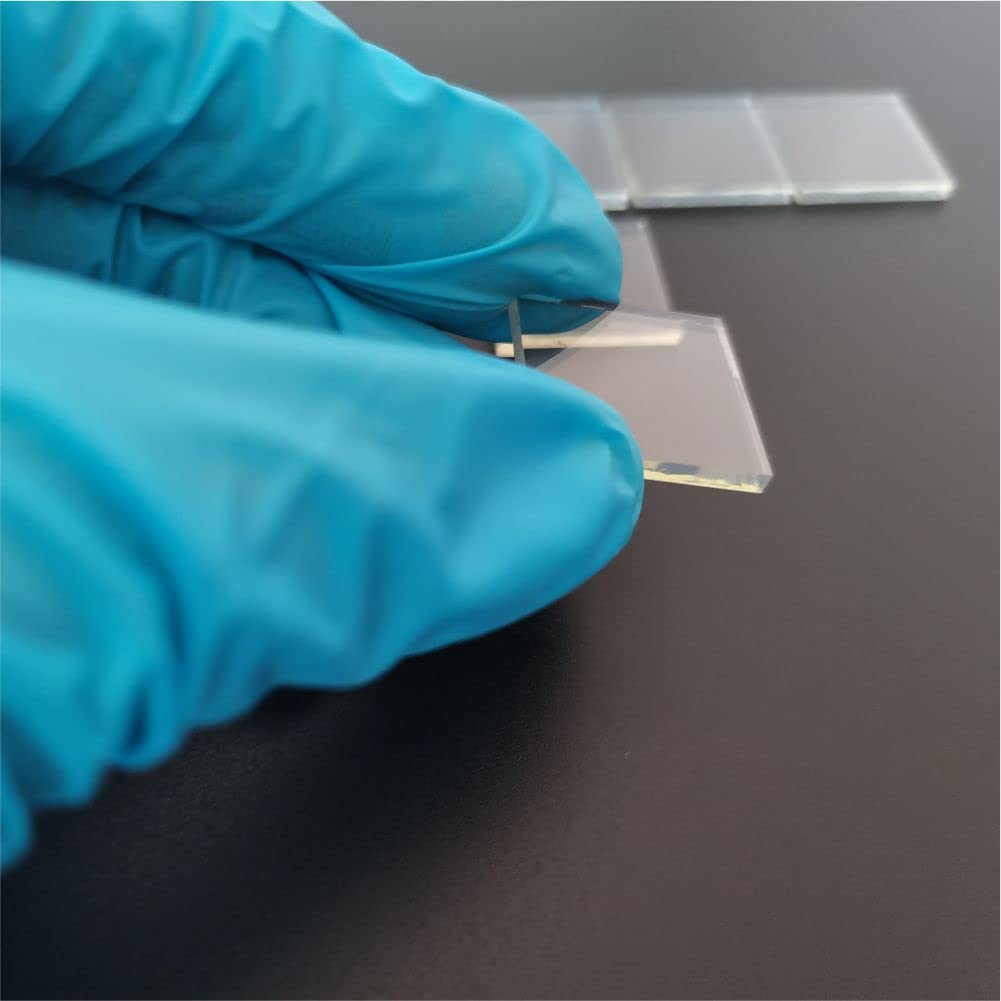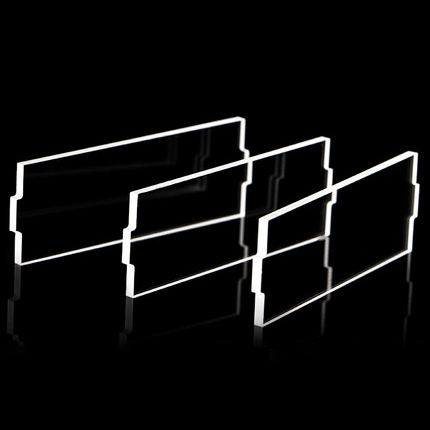产品: Dichroic Filter
Featured products
No products found
Dichroic Filter
Dichroic filters are precision optical components based on multilayer interference coating technology that split incident light by wavelength into two paths: specific wavelengths are efficiently reflected while others transmit through. Unlike absorptive filters, dichroic filters achieve wavelength separation through optical interference without generating heat, making them ideal for high-power laser systems and multi-channel optical designs.
Key Features
High-Efficiency Dual-Path Separation
Reflection band reflectivity >99%, transmission band transmission >93% (up to >97%), ensuring maximum light throughput in both optical paths with minimal signal loss.
Ultra-Steep Spectral Edges
Transition zone width only 3-8% of center wavelength, enabling precise separation of adjacent wavelengths, suitable for strict separation requirements of excitation and emission light in fluorescence microscopy.
Zero-Absorption Optical Design
Based on multilayer dielectric interference principles, no conversion of light energy to heat. Laser damage threshold >5 J/cm² (1064nm, 10ns pulse), suitable for both continuous-wave and pulsed laser applications.
Flexible Angle Design Options
Available in 0° (normal incidence) and 45° (standard beamsplitting angle) designs, plus custom angle options. Transition wavelength exhibits predictable blue-shift with angle variation, enabling wavelength fine-tuning applications.
Full Spectral Range Coverage
Complete coverage from ultraviolet to near-infrared (350-2500 nm), supporting diverse applications including UV laser cleanup, visible fluorescence imaging, and NIR laser beam combining.
Typical Specifications
| Parameter | Specification Range | Description |
|---|---|---|
| Transition Wavelength | 350–2500 nm | 50% reflection point, customizable for any wavelength |
| Transmission Efficiency (T%) | >93% typical, up to >97% | Within transmission band, AR coating available |
| Edge Steepness | 3–8% of center wavelength | Transition width from 10% to 90% reflection |
| Design Angle (AOI) | 0°, 45° (standard), custom | 45° most common for beamsplitting applications |
| Wavelength Shift Rate | ~0.2–0.3% per degree @ 45° | Blue-shift with increasing angle |
| Substrate Material | Fused Silica, BK7, Borosilicate | Selected based on wavelength range |
| Coating Type | Ion-beam sputtered (IBS) | Hard dielectric multilayer structure |
| Diameter/Size | 5–100 mm (custom available) | Round, square, or rectangular shapes |
| Thickness | 1–3 mm typical | Selected to minimize beam deviation |
| Transmitted Wavefront Error | <λ/4 @ 633 nm | High optical quality for imaging applications |
| Operating Temperature | -40°C to +85°C | Stable performance across temperature range |
| Laser Damage Threshold | >5 J/cm² @ 1064 nm, 10ns | High LIDT for laser applications |
Custom Dichroic Filter Solutions
TIHOT Optics provides dichroic filters covering UV to IR wavelengths (350-2500 nm), manufactured using ion-beam sputtering hard coating technology. Our products achieve >99% reflectivity in the reflection band and >93% transmission in the transmission band, widely used in fluorescence microscopy, laser beam combining, spectroscopic instrumentation, and multispectral imaging systems.
Custom Options Available:
- Custom transition wavelengths across 350–2500 nm range
- Ultra-sharp edge transitions (<10 nm width) for closely-spaced wavelengths
- Multi-band designs (dual, triple, quad-band configurations)
- Optimized edge positioning for specific fluorophore combinations
- Non-standard sizes and shapes (rectangular, square, diameters up to 200 mm)
- Enhanced LIDT designs for high-power laser applications (>20 J/cm²)
- Temperature-stabilized designs (<0.005 nm/°C shift)
- Low-autofluorescence formulations for single-molecule detection
- Complete filter set design (dichroic + excitation + emission filters)
- Mounted assemblies with precision angle mounts
Contact our technical sales team to discuss your requirements and receive a detailed quotation for custom dichroic filter solutions.
Q: What is the difference between 0° and 45° dichroic designs?
A: 45° dichroics are designed for beamsplitting applications (most fluorescence microscopes) where reflected and transmitted beams travel in different directions. 0° dichroics are used in-line where light continues straight through, with minimal polarization effects—suitable for transmission-mode filtering or laser cleanup. The angle of incidence affects coating design optimization and spectral performance.
Q: Can dichroic filters be cleaned?
A: Yes. IBS hard coatings withstand standard optical cleaning procedures. Use lint-free optical wipes with isopropanol or methanol, wiping gently in one direction. Avoid abrasive materials or excessive pressure. For stubborn contamination, acetone may be used. The coatings are durable enough for ultrasonic cleaning (use moderate power settings). Unlike soft-coated filters, IBS dichroics will not delaminate or degrade from normal cleaning procedures.
Q: What causes the color appearance of dichroic filters?
A: The multi-layer interference coating reflects certain wavelengths while transmitting others, creating striking color effects. A dichroic designed to reflect blue light (400-500 nm) and transmit red light (>550 nm) will appear blue when viewed in reflection and orange/red in transmission. The color changes dramatically with viewing angle due to the wavelength shift property—this is normal and demonstrates the filter’s wavelength-selective behavior.
Leave Your Message

